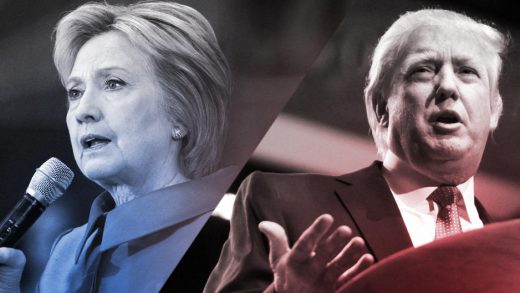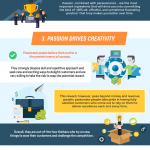3 Things Clinton And Trump Should Practice Before Sunday’s Debate
You might have read in the news that Hillary Clinton prepared a bit more intensively than Donald Trump for the first presidential debate. But even if you didn’t, you probably heard about its aftermath, with Clinton widening her lead in the polls and the Trump campaign vowing that the GOP candidate would buckle down on his preparation strategy ahead of the second debate.
Clinton was said to have cleared her schedule the week before the debate. She surrounded herself with strategists and communication experts. She studied policy and rehearsed her talking points. According to CNN, she also spent time watching Trump’s past debate performances and reading up on his policy proposals. Trump, meanwhile, continued to campaign, and one of his aides told the New York Times Trump had trouble focusing during practice sessions.
We’ll have to see whether his new strategy pays off in Sunday’s debate. To know what to watch out for, here’s a look back at three key moments from the first debate that revealed how much both candidates may have brushed up. It’s as a good a lesson as any that practicing a few important skills can help you nail even an unpredictable, unscripted speaking gig—whether you’re addressing eight people or 80 million.
1. Compelling Stories
One of the reasons preparation is so important is because you get to practice your stories. We all have so many experiences in our lives that it can be difficult knowing which narratives to share for which occasions.
Clinton shared multiple stories, each with colorful imagery. The most memorable one she told was about her father. “He worked really hard,” she recounted. “He printed drapery fabrics and went down with a silk screen and dumped the paint in and kept going.” In the context of a presidential debate, it’s easy to dismiss recollections like these as canned political set pieces—which they undoubtedly are.
But that doesn’t make them any less effective rhetorically. Because Clinton’s memory was real, her gestures were real, and as she told this story, her expressions were authentic. The image she painted of her father wasn’t hard to visualize. And because she’d prepared ahead of time to paint it, Clinton had no trouble turning back to that narrative when the argument suited it. Later in the debate, she expressed relief that her father had never worked for Trump. That brought continuity to her remarks over the course of the debate, and gave viewers a memorable image to latch onto.
Trump didn’t seem to have prepared any similarly colorful examples. He may have wanted to avoid coming off as rehearsed—something Clinton has been criticized for in the past—but that meant forgoing many opportunities to paint a vivid picture to engage viewers’ imaginations. In fact, Trump mentioned his own father, too—but only to say that he gave him “a very small loan” to start his company (that loan has been estimated at $14 million, or $31 million in 2016 dollars). He could have told a brief story that better illustrated their relationship, or emphasized how grateful he was for the assistance, but Trump didn’t seem to have this sort of narrative at hand.
2. Memorable Catchphrases
When Saturday Night Live parodied the first debate, Kate McKinnon, playing Clinton, teased that the Democratic candidate’s “Trumped-up trickle-down economics” line was a carefully planned catchphrase: “I don’t know, I guess if I had to call it somethin’ off the top of the ol’ dome with no prep whatsoever, I don’t know, I guess I’d call it, Trumped-up trickle-down economics!” When asked if she just came up with that on the spot, McKinnon adds cannily, “I did, right off the stiff red cuff!” and holds up the starched, scarlet sleeve of her pantsuit.
And of course the line was rehearsed. But just like planned stories, clever headlines like these are powerful weapons, even if they’re easy to lampoon. Even though you could tell the “Trumped-up trickle-down” line was preplanned, it didn’t matter—it was effective. If viewers remember a single line from Clinton’s airtime in the last debate, it’s probably this one, which distills her criticism of her opponent’s economic philosophy into four words. That’s exactly the type of provocative zinger that won’t just come to you on the spot.
One of Trump’s best lines was when he said he would release his tax returns just as soon as Clinton “releases her 33,000 emails.” It was a powerful way to turn the tables and call his opponent a hypocrite on matters of transparency. Perhaps Trump did think of this right in the moment, but this was likely one of the retorts he worked on prior to the debate. Regardless, if you struggle to deliver zingers like these, you risk leaving your audience without something memorable to ponder afterward.
3. Hitting Talking Points Without Dodging Questions
Finally, it’s useful to practice connecting your talking points with the potential questions you will be asked. That’s true whether you’re joining a panel discussion, being interviewed by the press, or hosting a Q&A after your remarks—and it’s true for a presidential debate, too. After all, preparing your points is just the beginning. The real challenge is how you can get to them in a format you may not have much control over.
When you’re being asked a question, ignoring the question remains one option. But if the first debate was any indication, audiences are quick to note a dodge: You ask A, and I answer B. That looks even more rehearsed, mechanical, and sometimes downright deceitful than any preplanned story or clever headline you may have lined up. The latter two can often help you, but the former almost always hurts. The real art is to learn how to bridge from the question into your talking points by giving at least some sort of direct response, however brief. This way, you’ll seem more in the moment and authentic.
Clinton did this pretty well when moderator Lester Holt asked her how she would heal the country’s racial divide. She said, “Well, you’re right. Race remains a significant challenge in our country.” She then went into her talking points about criminal justice reform and gun control—but first, she connected with the question directly. Clinton was able to do this in some fashion for every question she was asked, likely because she was prepared.
Fast Company , Read Full Story
(27)














